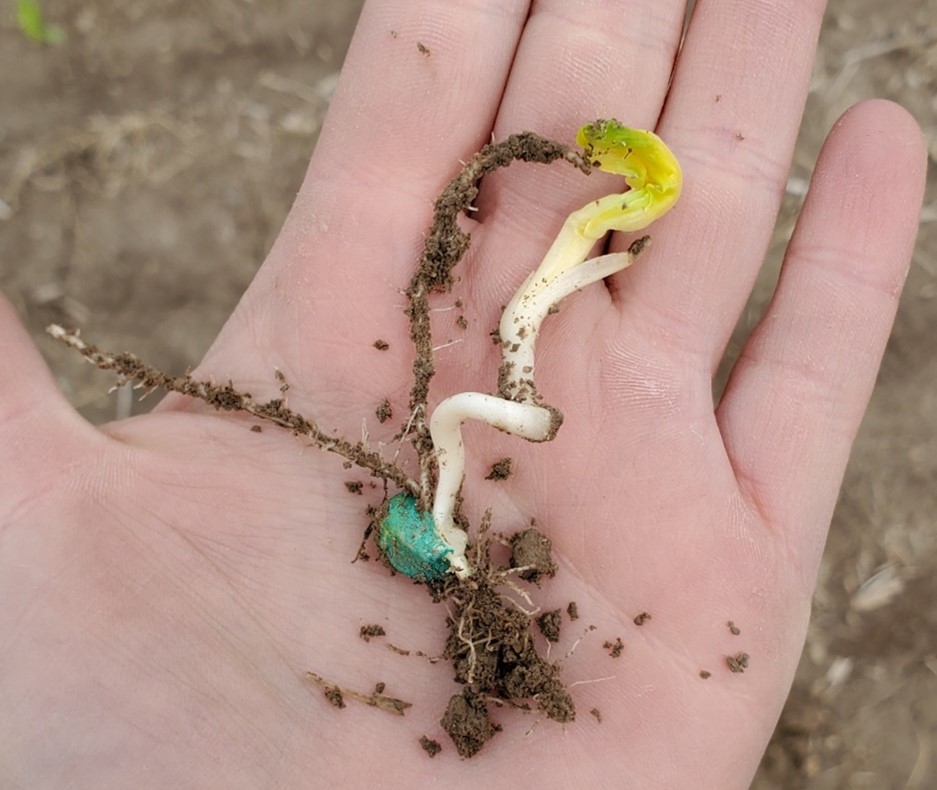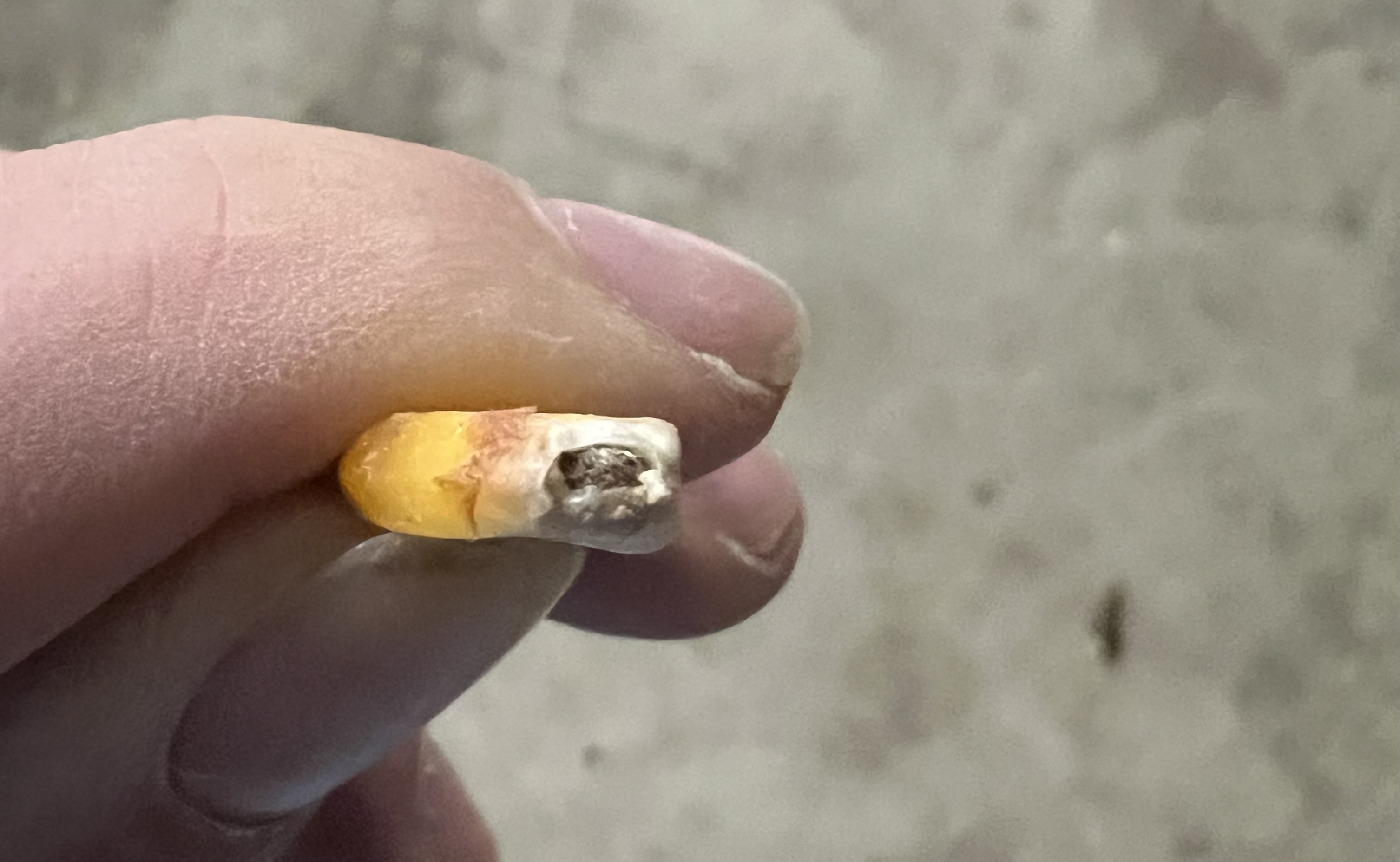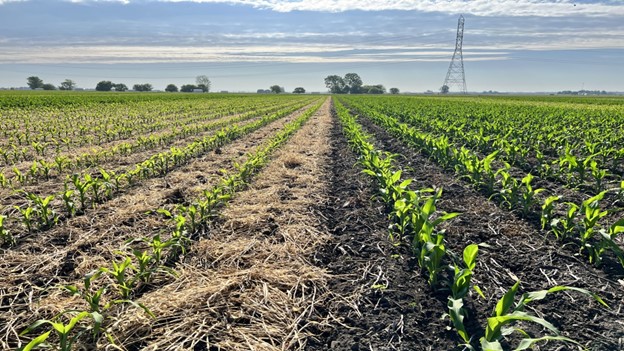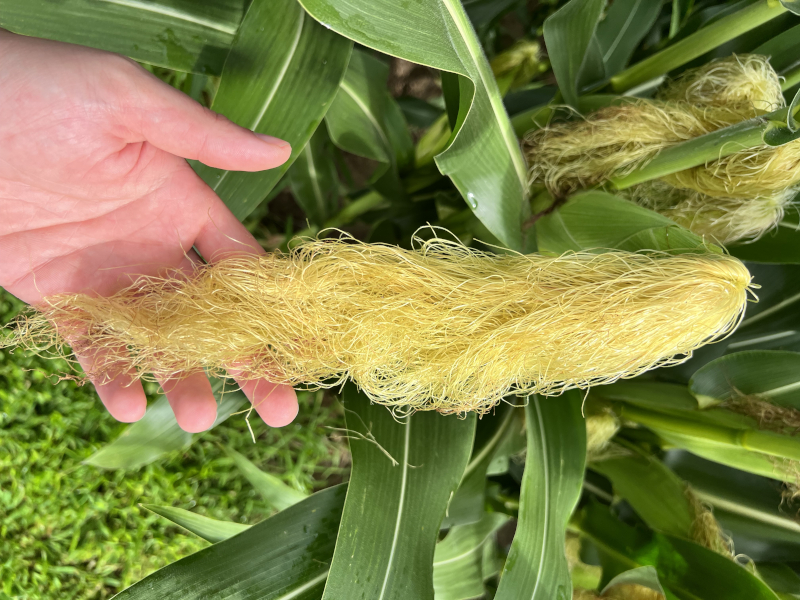It is now time to evaluate fields for any stalk or ear rot symptoms. This will aid in making assessments about field harvest order and if there is a risk of mycotoxin contamination. There are many factors that can contribute to stalk decline. There are both plant pathogenic causes and abiotic stresses factors that can play a role in reduced stalk integrity, such as drought and flooding. Either way, as stalk tissue becomes compromised below the main ear the stalk may become brittle or weak and be prone to lodging.
As the corn plant loses photosynthetic leaf area due to different stresses such as foliar disease and hot and dry conditions, the amount of carbohydrates available for dry matter deposition into the kernels is also decreased. Therefore, plants respond by remobilizing non-structural carbohydrates from the stalk to supply the demand required by the developing kernels on the ear. This response causes stalk strength and integrity to decrease, and increases a corn plant’s risk of lodging and infection from pathogens that cause stalk rot. Fields with large ear sizes and strong kernel set, which have a high kernel fill demand, may also be at the greatest risk.
Stalk rots
There are a number of plant pathogens that can cause stalk rot including, Anthracnose, Bacteria, Charcoal, Diplodia, Fusarium, Gibberella, and Pythium. Some of these stalk rots have very characteristic symptoms that can help identify the specific problem, while others may require laboratory diagnosis (Table 1). The Purdue Extension Publication Corn Diseases: Stalk Rot has good images to help identify the major stalk rot diseases we see in Indiana (https://www.extension.purdue.edu/extmedia/BP/BP-89-W.pdf ).

It is time to check stalk integrity – check field by using the Push or Pinch Test by evaluating 20 plants in at least five random areas in a field.
- Pinch Test – grab the stalk somewhere between the lowest two internodes and pinch between your fingers to see if the stalk is strong enough to handle the force – if the stalk collapses, it fails.
- Push Test – push the stalk to a 30-degree angle – if it pops back up when released, it passes the test, if not it fails.
Threshold: 10% or more of the stalks fail then consider field for early harvesting to avoid risk for lodging.
What can you do in the future – management options will depend on the specific disease (see table 1). Production practices that promote good plant health including balanced fertilization, appropriate plant populations, and good water management can reduce stresses that might predispose corn to stalk rot. In addition, these key management tools can help mitigate future stalk rot issues.
- Properly diagnosis the stalk rot pathogen. (Samples can be submitted to the Purdue Plant and Pest Diagnostic Lab)
- Select hybrids with resistance if available.
- Crop Rotation – rotating to non-host crop will help reduce stalk rot potential in a field. Note that Charcoal rot and Gibberella stalk rot can infect other rotational crops in Indiana
- Tillage – burying infected crop residue will encourage more rapid desiccation and help reduces risk of overwintering in crop residue.
- Good soil drainage and reduced compaction.
- Foliar Fungicides – applying foliar fungicides can help protect crop from foliar diseases that could predispose plant to stalk rot when present, but devoid of foliar disease pressure fungicides applications have not consistently been found to help reduce stalk rot.
Ear rots and mycotoxin risks.
Scouting for ear rots is also very important. The Crop Protection Network has a number of great resources to help scout and identify ear rots
In Indiana, five ear rots can lead to mycotoxin production in corn. They include Aspergillus ear rot, Gibberella ear rot, Fusarium ear rot, and Penicillium ear rot. They can cause the production of five different mycotoxins in association with the different ear rot: Aflatoxin (Aspergillus), Deoxynivalenol or as also called DON/vomitoxin and Zearalenone (Gibberella); Fumonisins (Fusarium), and Ochratoxin (Penicillium and sometimes Aspergillus).
If a field has ear rot problems, it will be important to test the harvested grain lots for mycotoxins. The Grain and Silage Sampling and Mycotoxin Testing Resources publication provides a good reference on how to take a sample or sub-samples and a list of professional laboratories available to grain testing. In addition, harvest management for ear rots includes identifying and harvesting fields early, drying grain quickly to below 15% moisture, and storing in dry and cool conditions to limit fungal growth and mycotoxin accumulation.





